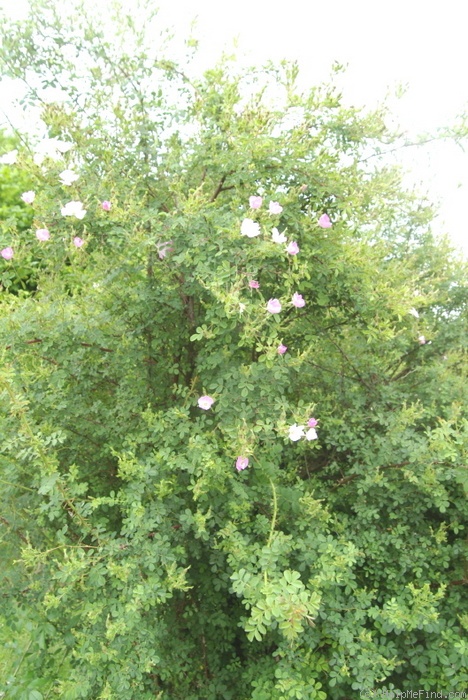|
|
'R. stellata' rose Description

Photo courtesy of David Elliott
ARS:
Deep pink Species.
Exhibition name: R. stellata
Origin:
Introduced by Unknown in 1902 as ' Rosa stellata Wooton'.
Bloom:
Deep pink, purple shading. Average diameter 1.75". Small to medium, single (4-8 petals), borne mostly solitary bloom form. Once-blooming spring or summer.
Habit:
Armed with thorns / prickles, bristly , well-branched. 3 to 5 leaflets.
Height: 1' to 2' (30 to 60cm). Width: 3' (90cm).
Growing:
USDA zone 6b through 9b (default).
Patents:
Patent status unknown (to HelpMeFind).
Parentage:
If you know the parentage of this rose, or other details, please contact us.
Notes:
Subgenus Hesperhodos. Subgenus Hesperhodos has two species: Rosa stellata and Rosa minutifolia. Rosa stellata in turn has three subspecies: stellata, mirifica and abyssa.
Rosa stellata was first collected on 30 April 1893 and described botanically in 1898, when a description by E. O. Wooton was published in the Bulletin of the Torrey Botanical Club. Botanically, the plant that was described by E.O. Wooton was distinct from Rosa stellata mirifica and is accurately described as Rosa stellata subspecies stellata.
Although it was collected in 1897, the subspecies mirifica was not botanically described until 1910, when Edward Greene discussed it in Leaflets of Botanical Observations and Criticism. Green named the rose Rosa mirifica. By 1914, another botanist, T.D.A. Cockerell, determined that it was not a separate species but rather a morphologically distinct variety of Rosa stellata. So at that time, its botanical name became Rosa stellata var. mirifica (Greene) Cockerell.
In 1965, the preeminent North American expert on Rosa, Dr. Walter Lewis of the Missouri Botanical Garden and Washington University, traced all of this history and reclassified all the varieties of Rosa stellata. You can read it online at http://www.biodiversitylibrary.org/item/65866#page/121/mode/1up Most recently, a third subspecies has been described, subspecies absyssa.
|